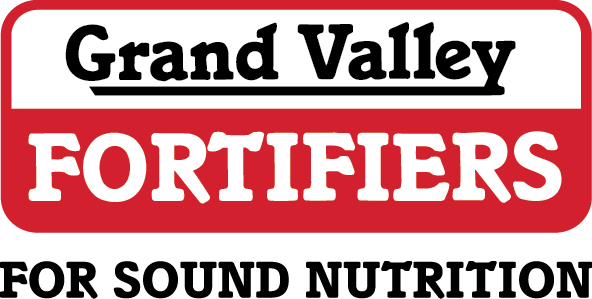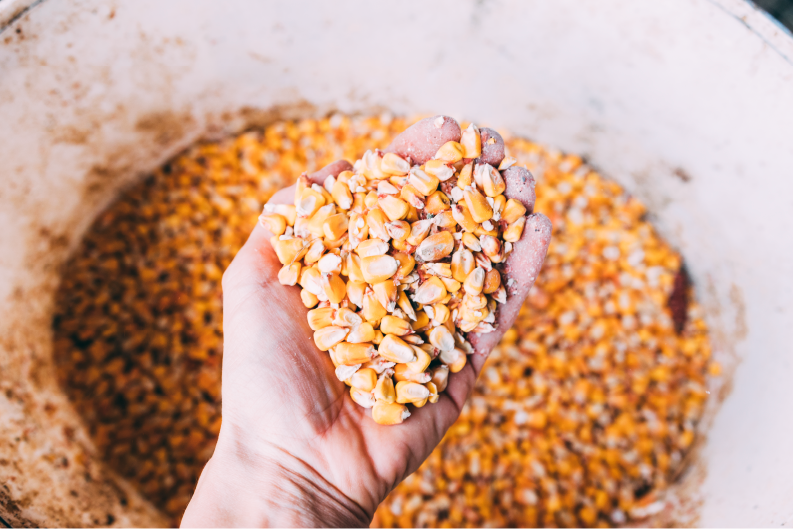By Kayla Silva
Monogastric Nutritionist
Grand Valley Fortifiers
The 2023 Ontario corn harvest is coming to an end. While most Ontario corn regions have had decent growing conditions, the last week of June throughout September had frequent rainfall and therefore corn remained wet, was less mature, and hence increased the risk of mold contamination. To date, a total of 54 corn samples representing 35 different farms across Ontario were sampled and analyzed for DON (Vomitoxin), Zearalenone, T2, Fumonisons, and Aflatoxins (Table 1).
DON values represent the majority of the mycotoxin load and has an average of 1.68 ppm. Although the maximum value for DON is 8.2 ppm, it should be noted, however, that there can be variability of mycotoxin contamination due to hot-spots. With this in mind, mycotoxin contamination was further broken down by Ontario Counties **.
While looking at this data, it is important to note that a small sample size will easily influence mycotoxin values, and it is crucial to send corn samples for analysis to determine your corn mycotoxin load. It is equally important to recognize symptoms of mycotoxin contamination within your herd.
The table below lists the potential symptoms associated with mycotoxin contamination:
Since we are seeing roughly two times higher average DON toxin levels in 2023 (1.68 ppm) compared to 2022 (0.83 ppm), below are some strategies for dealing with feed grains contaminated with mycotoxins:
Cleaning or Roasting the Grain
Most of the mycotoxins are found in the fines of the grain samples, so removing the fines often reduces the number of mycotoxins in the grain. This can often be accomplished by screening or blowing the chaff of the grain away before the grain is stored. Another method is to roast the grains which burns off the fines and removes the toxin from the surface of the grain.
Diluting Contaminated Grain
Dilute with clean grains to reduce mycotoxin levels in the feed. Some of the ingredients that can be used this year include clean wheat, barley, and bakery meal. For those producers liquid feeding, using ingredients like liquid whey or brewers yeast are great strategies for diluting mycotoxin contamination.
Enzymes
Enzymes are a more recent developing strategy for mitigating the effect of mycotoxins in the feed. These enzymes can transform mycotoxins into less toxic compounds. As more knowledge is gained in this area, there will be more and more efficacious enzymes developed to transform the known and unknown mycotoxins present in the grains.
Probiotics
Probiotics are evolving as a new strategy for dealing with mycotoxin contaminated feeds. Some probiotics can transform whole families of mycotoxins, such as the trichothecenes, to less harmful compounds or eliminate them completely by biotransformation. Probiotics can offer protection to the gut by restoring the tight junctions between the cells and thereby the permeability of the gut, decreased by the presence of mycotoxins in the feed.
Year to year mycotoxins remain a risk in feed grains fed to livestock animals, of which pigs are the most sensitive. Ultimately, laboratory testing is best for assessing the risks in feeding contaminated grains. Being vigilant and custom made dress assessing symptoms within your herd as well as speaking with a Grand Valley Livestock Business Consultant or Grand Valley Nutritionist about mitigation strategies is the best way to cope with mycotoxin contamination.
This article was written for the Spring 2023 Swine Eastern Dairy Grist. To read the whole Swine Grist, click the button below.

